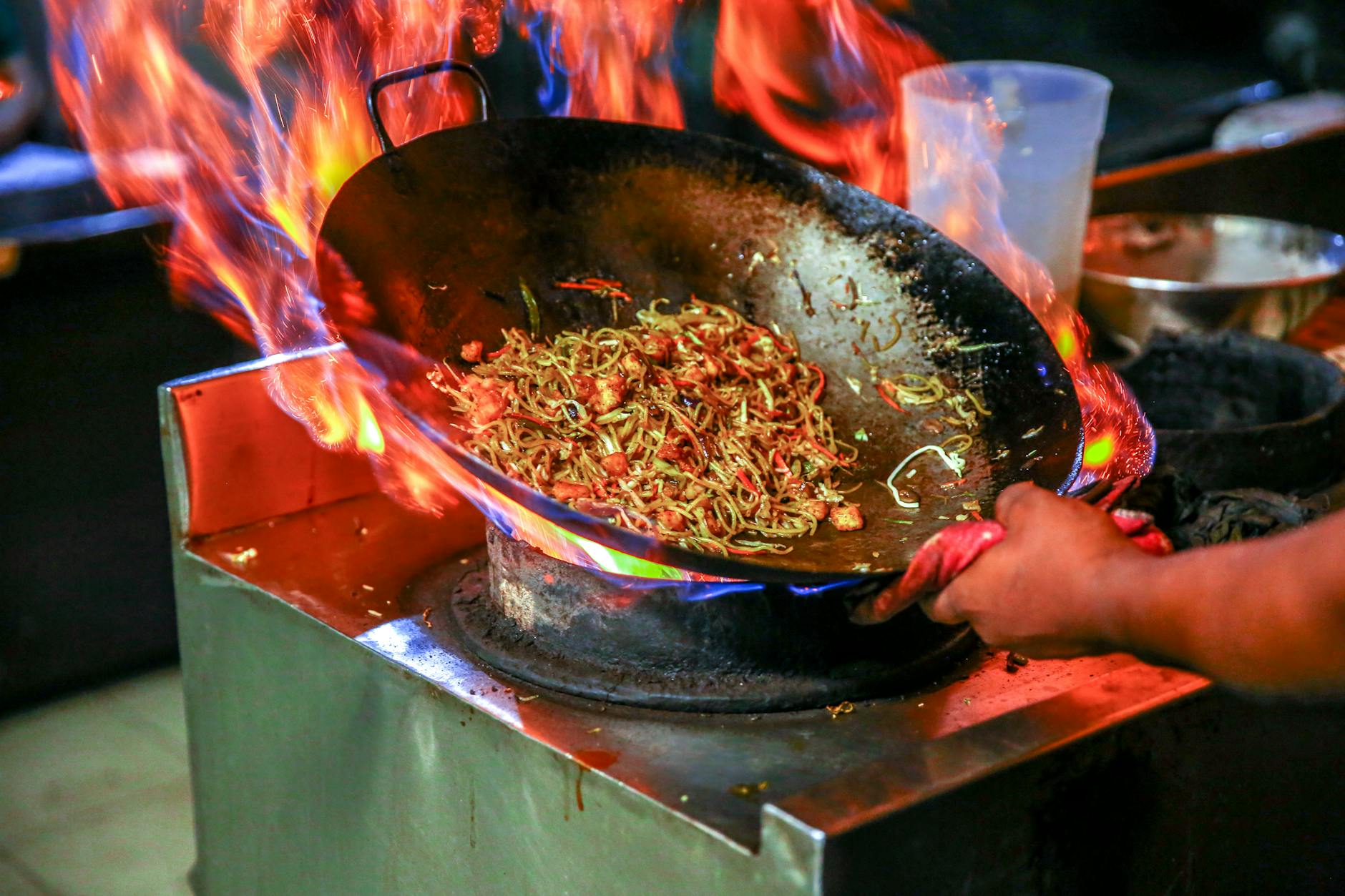Table of Contents
- The Nomadic Kitchen Starter Kit
- Leveraging Local Markets
- One-Pot Wonders
- The Art of Foraging and Fishing
- Preservation Techniques
- Flexibility and the Unexpected Feast
The Nomadic Kitchen Starter Kit
First and foremost, let me share the cornerstone of nomadic culinary wisdom: packing the right tools can make or break your open-road kitchen. A compact, multi-use cooking gadget is the Swiss Army knife of your backpack. I remember laughing when I first saw a spork — now, I guard mine like Gollum with his “Precious.” Honestly, a good knife, a spork, a portable stove, and a durable pot can take you from the Sahara to the Siberian tundra, gastronomically speaking. But here’s the kicker: multi-use doesn’t just apply to tools. Ingredients, too, must pull double or triple duty. Think olive oil that doubles as salad dressing and triples as a pan fryer; or rice that serves as a side dish, transforms into a stir fry, or morphs into dessert pudding. Keep your pantry versatile, and the world is your oyster (stuffed with rice, if you wish).Leveraging Local Markets
Then, there’s the culinary treasure hunt known as the local market — an experience that’s as much about culture as it is about sustenance. On a sunny afternoon in Morocco, as I zigzagged through the maze of the medina, I found spices whose names I couldn’t pronounce but whose aromas I will never forget. These markets are your best bet for fresh produce, unique spices, and the occasional language lesson. Just remember the golden rule: if it can’t be eaten raw and it’s not cookable in a single pot, think twice before buying. Moreover, every market visit is a crash course in bargaining — a skill that’ll save you more than a few coins. Here’s a smile-inducing trick: learn to say “delicious” in the local language. Not only will it endear you to the vendors, but it also serves as commentary and appreciation all in one go. Before you know it, you’ll be sampling olives like a pro, leaving a trail of “delicioso,” “おいしい,” or “맛있어요” in your wake.Recommended article: How to Manage a Team from Another Continent

One-Pot Wonders
Now, let’s talk recipes. One-pot wonders are the unsung heroes of nomadic cooking since they generally require less fuel and fewer dishes — a winning combo when clean water is more precious than the spices in your backpack. I once whipped up a Shakshuka (look it up — it might become your next breakfast love) on a rickety boat in Indonesia and managed, against the sway of the sea, not to turn it into an inedible scramble. Oftentimes, the less I have, the more creative I become. Rice and beans can be a sad tale of woe, sure, or they can be a raucous fiesta in your mouth with the right seasonings. Don’t underestimate the transformative power of a spice kit. With a dash of cumin here and a sprinkle of chili there, you can travel the globe without moving your feet. Besides, the locals might offer you tips and spices that’ll add an authentic flair and turn your next meal into an international incident of deliciousness. Consider the stew. It’s forgiving, adaptable, and open to interpretation. It can be cooked low and slow while you set up camp or scribble in your journal. As long as you have a base of broth or even just water, you can throw in anything from lentils to lion’s mane mushrooms. And it only gets better with time, much like your storytelling abilities around the campfire.The Art of Foraging and Fishing
Alternatively, foraging and fishing can turn your meal prepping into a veritable scavenger hunt. I remember being on the coast of British Columbia, watching locals dive for sea urchins. Though I was more spectator than diver, those spiny delicacies got me thinking about the edible treasures that surround us. Foraging is like nature’s pop quiz; it tests your knowledge, but the reward is literal fruits (and vegetables and mushrooms) of your labor. However, ensure you’re familiar with safe foraging practices — not all berries are friendly, and some mushrooms have more in common with a witch’s brew than with a pasta dish. There are plenty of online resources and local foraging tours that can provide you with the know-how to harvest nature’s bounty safely. And then there’s fishing. Whether it’s casting a line off a pier in the Pacific Northwest or rigging a simple bamboo rod in Southeast Asia, the patience and payoff (assuming the fish cooperate) are the essence of zen. Plus, there’s nothing quite like the sense of accomplishment that comes from eating a meal you’ve literally caught yourself. Admittedly, I’ve had more luck befriending the fish than catching them, but that’s a tale for another time (and another meal).Preservation Techniques
What about leftovers, you ask? Let’s delve into the riveting world of preservation. Sure, we’ve all dabbled in the art of sandwich-making with yesterday’s roasted chicken, but have you tried your hand at pickling? Not only is brining an excellent way to extend the shelf life of various foods, but it also keeps scurvy at bay — and who doesn’t want to avoid a pirate’s fate? I’ve learned to pickle everything from cucumbers to capers. Each jar is like a time capsule, ready to burst open with tangy goodness when you’re three days deep into the woods and craving something crisp. Likewise, drying or dehydrating fruits and meats can give you a supply of snacks fit for a hike or a long bus journey. Food won’t last forever, but with the right techniques, it can grace your plate for days (sometimes weeks) longer than you’d expect.Recommended article: Adopt a Digital Nomad Lifestyle for Personal Growth



